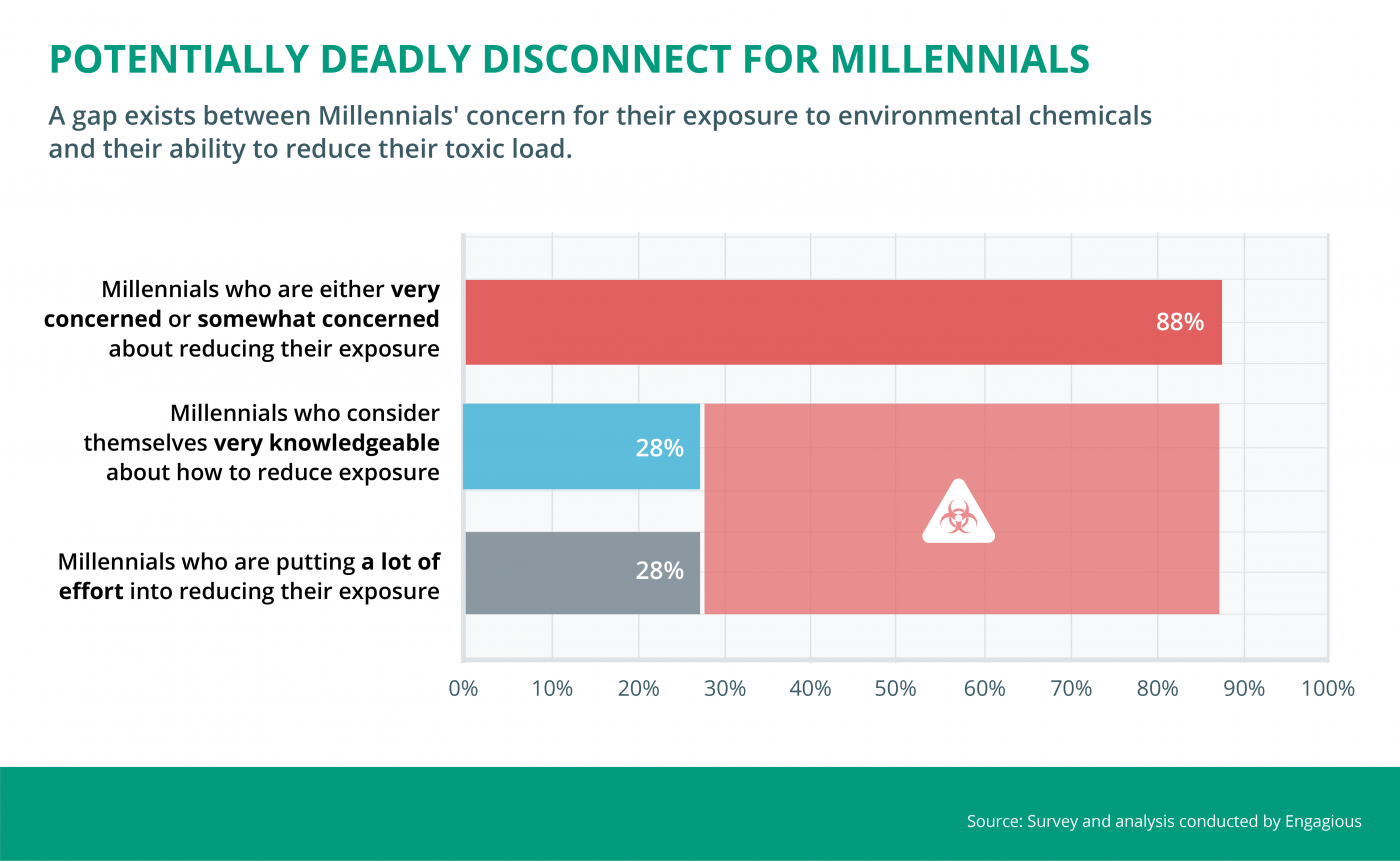13 Feb Finding the Gap in Millennials’ Understanding of Environmental Toxins (and helping launch a book in the process)
In 2014, Cindy Klement made a disturbing discovery: that her decades of eating and living cleanly hadn’t shielded her body from environmental toxins. Further research revealed that this toxic burden not only impacts a person’s health—it’s passed directly to babies through the umbilical cord and breast milk.

An Engagious study showed that Millennials are highly concerned about environmental toxins but are typically not informed about their impact nor how to reduce exposures.
Her discoveries drove Klement to compile research findings into a reference guide for the layperson: Your Body’s Environmental Chemical Burden. She’s got a message she particularly wants Millennials to hear: “You are carrying a significant toxic load. Detox. Especially before you have kids.“
In general, sustainability guides millennial shopping habits and food choices. Millennials want clean air and clean water and renewable energy. But how savvy are they on the issue of environmental toxins? Klement’s publicist, Carolyn Will, decided that a study was needed to give Klement a clearer picture of her audience. On a recommendation, Will turned to Engagious.
Engagious conducted an online survey of 250 people (ages 18-38), across four U.S. regions, to gather a baseline of awareness, perceptions, and behaviors connected to reducing environmental chemical exposures. It also measured interest in Klement’s book. Approximately 9 in 10 millennials acknowledged concern about environmental toxins. But they did not understand how to reduce their exposure.

“The study indicated that most millennials acknowledge daily exposure to environmental chemicals and concern about the harm those chemicals can do,” says Engagious Director of Research Gina Derickson. “The study also reveals there is a real need for education in this age group—about both the sources of these risks and what can be done to reduce them.”
Klement suspected this would be the case—that even though the environment is an important issue for this age group, there isn’t a lot of follow through. The dots are not connecting. The most rattling finding revealed through the survey was “how little they knew about the sources of the toxins that they’re absorbing every day,” Will continues. “This finding adds to our urgency and determination to find a way to impress upon young people the seriousness of this health issue.”
“The Engagious team understood what I was looking for, and the study armed me with relevant, new data that gave me a clearer picture of the challenges millennials face in reducing their exposure to environmental toxins.” Cindy Klement
Will says the survey results and resulting graphic give her a place to start the conversation when she’s pitching Klement for speaking engagements and media events. “The summary report breaking down the survey results is extremely useful. We will have that slide in every talk.”

Will appreciated Derickson’s management of the research process. “She’s really knowledgable in constructing a survey in a way that will dig in and unearth the issues at hand. I also appreciated her feedback on how best to organize the survey results in an easily digestible manner for the general public. Survey data can be intimidating. Gina sourced through the material like a master and gave us valuable information we can use.”
Will and Klement are starting with regional venues, which for them means Michigan, Chicago, and the Twin Cities; and they plan to expand from there, using the survey results to help garner attention and make a stronger case with Millennials to read Klement’s book.

Sorry, the comment form is closed at this time.